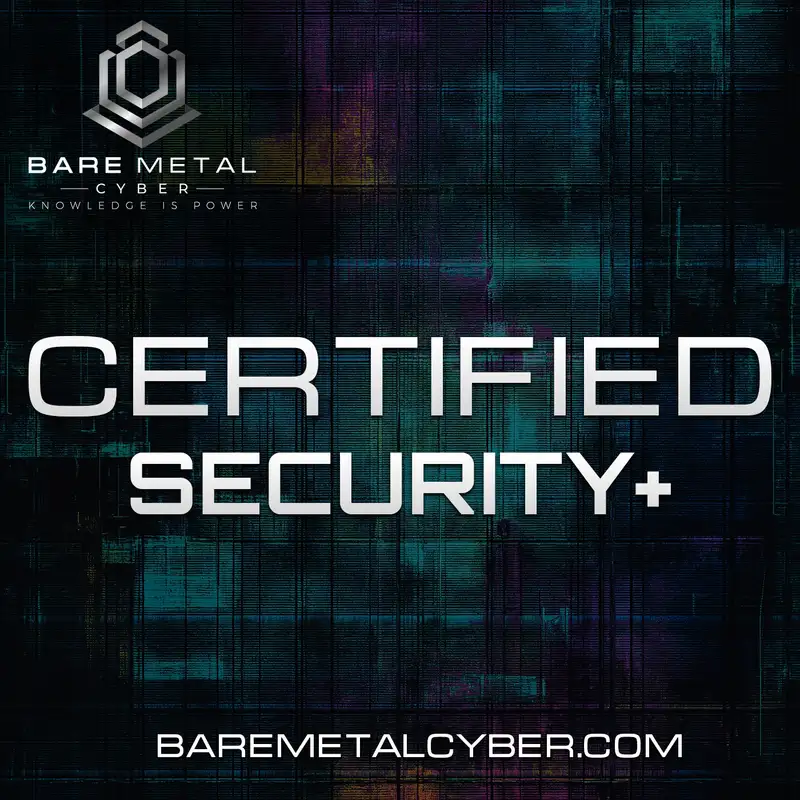All Episodes
Displaying 1 - 20 of 222 in total
Episode 1: What Is the CompTIA Security Plus Certification?
This episode kicks off the Certify – Security Plus podcast series by introducing the CompTIA Security+ certification. You’ll learn what this credential is, why it's su...

Episode 2: How the Security Plus SY0-701 Exam Is Organized
Understanding the structure of the SY0-701 exam is crucial before you dive into study mode. This episode provides a domain-by-domain walkthrough of the Security+ certi...

Episode 3: Preparing for the Security Plus Exam: Study Strategies That Work
In this episode, we tackle the biggest early challenge: how to study for the Security+ exam effectively. We'll guide you through building a realistic, sustainable stud...

Episode 4: What to Expect on Exam Day—and Beyond
Exam day can be nerve-wracking, but this episode prepares you for everything you’ll face—from check-in to the final click of the mouse. We walk through the logistics o...

Episode 5: Introduction to Domain One — General Security Concepts
Domain One sets the tone for the entire Security+ exam, introducing key cybersecurity principles like confidentiality, integrity, and availability. This episode breaks...

Episode 6: Introduction to Security Controls (Domain 1)
Security controls are the foundation of every cybersecurity strategy, providing the rules, tools, and enforcement mechanisms that protect data, systems, and operations...

Episode 7: Security Control Categories Deep Dive (Domain 1)
Security controls can be grouped into several major categories—technical, managerial, and operational—each playing a distinct but complementary role in securing modern...

Episode 8: Physical Controls and Their Implementation (Domain 1)
While cybersecurity often emphasizes digital threats, physical security controls are just as vital, forming the first line of defense against unauthorized access to sy...

Episode 9: Security Control Types Explained (Part 1) (Domain 1)
Security controls are not only categorized by function, but also by the role they play in the security lifecycle—specifically, whether they are preventive, deterrent, ...

Episode 10: Security Control Types Explained (Part 2) (Domain 1)
In the second half of our discussion on control types, we explore detective, corrective, compensating, and directive controls—each of which plays a crucial role in ide...

Episode 11: Compensating and Directive Controls (Domain 1)
Compensating and directive controls often serve as the bridge between policy and practice, offering essential flexibility and guidance in environments where standard c...

Episode 12: Confidentiality, Integrity, and Availability (CIA Triad) (Domain 1)
The CIA Triad—Confidentiality, Integrity, and Availability—forms the foundational model upon which nearly all cybersecurity principles and practices are built. In this...

Episode 13: Non-Repudiation and AAA (Authentication, Authorization, Accounting) (Domain 1)
Cybersecurity is not only about prevention—it’s also about proof, accountability, and enforcement. In this episode, we examine non-repudiation and the AAA model—Authen...

Episode 14: Gap Analysis and Zero Trust Security (Domain 1)
Security programs are only as strong as their weakest uncovered areas—and that’s where gap analysis and Zero Trust come into play. This episode introduces gap analysis...

Episode 15: Physical Security Essentials (Domain 1)
Physical security remains a vital—if sometimes overlooked—component of cybersecurity, especially when protecting facilities, data centers, and physical access points. ...

Episode 16: Deception and Disruption Technologies (Domain 1)
Deception technologies play a unique and powerful role in cybersecurity by proactively misleading, confusing, or delaying attackers while providing valuable insight in...

Episode 17: Introduction to Change Management (Domain 1)
Change is inevitable in IT environments, but without structure, even small adjustments can introduce security gaps or operational disruptions. This episode introduces ...

Episode 18: Business Processes in Change Management (Domain 1)
Security is not just a technical concern—it’s deeply intertwined with business processes, especially when it comes to change management. In this episode, we examine ke...

Episode 19: Effective Implementation and Maintenance in Change Management (Domain 1)
A successful change doesn’t end with approval—it must be implemented carefully and maintained with consistency. In this episode, we cover critical operational elements...

Episode 20: Technical Implications of Change Management (Domain 1)
Change at the technical level affects more than just configurations—it can ripple through applications, dependencies, and user experiences in complex and unexpected wa...
